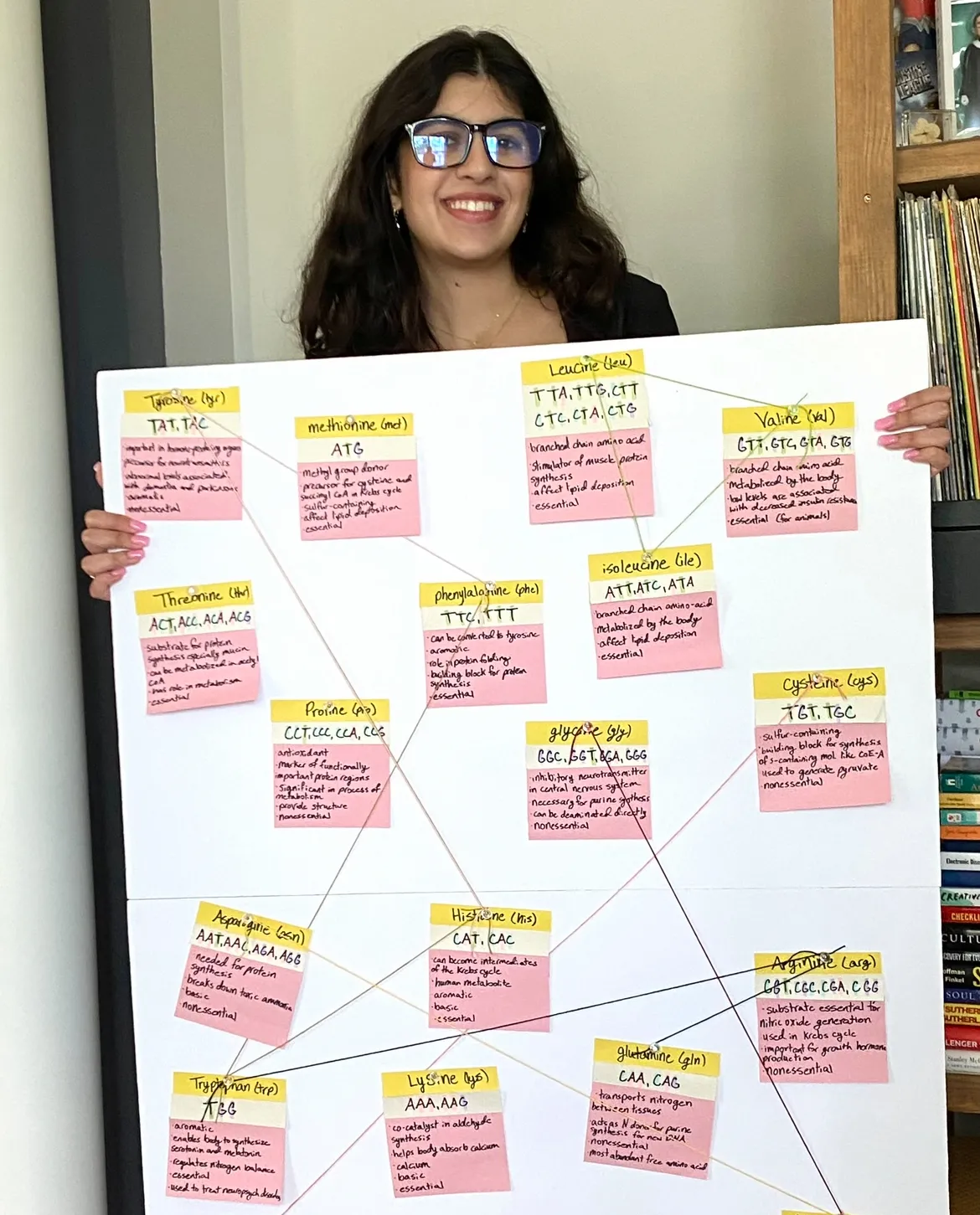
As a chemistry major and Arabic minor, Lily Sahihi never imagined that her two passions would intersect. “Arabic and STEM have both played huge parts in my life, but I usually think about them in very separate contexts,” she shared. “Having the opportunity to combine these two studies into interdisciplinary research is something I never expected but I’m incredibly grateful to explore.”
During a class on Arabic root forms, Middle East & North African Senior Professor of Practice Bouchaib Gadir mentioned the similarities between Arabic and DNA in stem cells. “That seed was planted in my head, and I just couldn’t stop thinking about it,” Lily continued. She pulled out her notes from Arabic and biology classes and started forming connections. That day she reached out to Professor Gadir, explaining how she thought the concept had potential and the two applied for a research grant through Tulane’s Center for Engaged Learning & Teaching, which covered the cost of research materials and provided a student stipend.
After being notified that they received the grant, Dr. Gadir began to create short lessons and explanations on the semantics of the Arabic language as it relates to the stemming of roots, while Lily took that information and amalgamated it with research on stem cells and amino acids.
The research looks to draw parallels between the way that Arabic words are formed and the formation and functions of amino acids present in stem cell DNA. In Arabic lexicology, the “root” of a word is made up of three letters that create a core meaning. Prefixes, suffixes, and clitics (short forms of words that cannot stand alone and must be added to other words) are then added to form more specific nouns and verbs. For example, by taking the root k-t-b and adding vowels and suffixes, the words kitab (كتاب), which means book, katib (كاتِب), which means writer, maktaba (مَكتَبة), which means library, and many others can be formed. All of these words ultimately share the same root, and their meanings can be attributed to having to do with writing.
The ultimate base of the biological side of the research surrounds the fact that RNA is made up of a series of codons, which are created by a sequence of three nucleotides. This research also mainly focuses on stem cells, which, in their embryonic form, can divide into most or all cell types in an organism. The genetic makeup of these cells dictates what they will become, using a series of transcription factors that signify if certain genes (segments of DNA) will be active or inactive.
These genes are transcribed into RNA, which is made up of series — or three-letter nucleotide groupings known as codons. Each nucleotide is made of a ribose molecule, a phosphate group, and either adenine, guanine, cytosine, or uracil. The codon that three nucleotides form specifies the production of an amino acid. Each of the 20 amino acids that could be produced has a sequence of three nucleotides, along with specific traits and characteristics. Similar to the way Arabic roots dictate a core meaning, three nucleotides dictate an amino acid, and similar letter pairings and patterns also show noticeable similarities in the functions of their respective amino acids.
“Lily’s innovative research is grounded in critical thinking,” Professor Gadir said. “The skills she has developed, such as enhanced analytical abilities and the capacity to identify connections between different domains, are vital for engaging with diverse frameworks.”
The goal of this research is to provide an interdisciplinary understanding of both topics in such a way that research on each may contribute to the theorization of both. It also may contribute to the creation of new and novel models of genetic coding.
There are many nuances to this research including new studies of Arabic lexicology that suggest that some words that share two letters of the root share striking similarities in meaning, regardless of the third letter. This is furthered by looking at the amino acids that only share the same sequence of two letters and their functions.
“Lily's project embodies the goals of interdisciplinary research initiatives that seek to merge STEM disciplines with a liberal arts education,” Professor Gadir shared. “Her work highlights the importance of integrating various fields to gain a deeper understanding of complex issues.”

